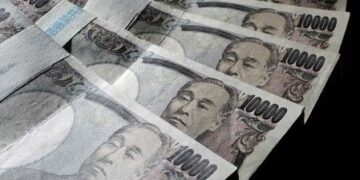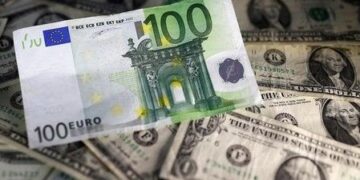(Reuters) -U.S President Donald Trump said on Thursday that Federal Reserve Chair Jerome Powell’s termination “cannot come fast enough”, while calling for the U.S. central bank to cut interest rates.
Trump, in a post on his social media platform Truth Social, reiterated his stance on rate cuts, saying that Powell “should have lowered interest rates, like the (European Central Bank), long ago, but he should certainly lower them now.”
The Fed’s benchmark interest rate is currently 4.25%-4.50%, where it has been since December following several rate cuts late last year.
Trump’s comments come a day after Powell said at an event at the Economic Club of Chicago that the Fed’s “independence is very widely understood and supported in Washington and in Congress where it really matters,” drawing applause from the high-level group of business executives for a pledge to set interest rates independent of political pressure or partisan considerations.
Trump has at times threatened to try to fire Powell, as he is attempting to do with members of other independent policy bodies in a move currently before the U.S. Supreme Court.
Powell on Thursday said the Fed is watching the case carefully but does not think any decision will apply to the central bank, whose credibility in managing monetary policy is considered important not just to the U.S. economy, but in global markets tuned to Fed decisions.
Powell’s term as chair expires in May, 2026, regardless. It was unclear from Trump’s language whether he is resigned to waiting that time out, or hoping for a Supreme Court decision that lets him remove Powell sooner.
Trump in his post said Powell was “always too late and wrong”, and critiqued the speech Powell made on Wednesday, calling it “another, and typical, complete mess!”
Powell on Wednesday warned Trump’s tariff policies risked pushing inflation and employment further from the central bank’s goals, which it manages jointly under a mandate from Congress.
The Fed was “well positioned to wait for greater clarity,” Powell said, indicating the Fed was not prepared to move policy in any direction or at any pace until Trump’s tariff plans — rolled out in dramatic announcements but often delayed and still unclear in key respects — are finalized and the impact on the economy more obvious.
Fed officials are now referring to it as an economic “shock,” and of a sort with no clear historical parallel — at once pushing the economy towards higher prices at the same time they are undermining sentiment and potentially employment.
Some Fed policymakers fear the impact on jobs could come fast, and have said they would be prepared for swift cuts. Others are concerned Trump’s policies and erratic handling of the issue could cut inflation expectations loose and force higher interest rates.
That dilemma for the Fed, of an economy potentially pulled away from both of the central bank’s goals, is what is now distinguishing the Fed from its major overseas counterparts.
The Fed did act in tandem with other central banks last year and lowered the U.S. benchmark policy rate a full percentage point, to the current range between 4.25% and 4.5% at three successive meetings.
But progress on returning inflation to the Fed’s 2% target stalled through the fall, prompting policymakers to pause further cuts until it was clear price pressures would begin easing again.
Trump arrived at the White House on Jan. 20, and since then the outlook has become more clouded with ambiguity for the Fed, and led to downgraded forecasts in other countries that kept their central banks on track to continue easing interest rates.
(Reporting by Angela Christy and Gursimran Kaur in Bengaluru; Editing by Chizu Nomiyama)
By Howard Schneider













